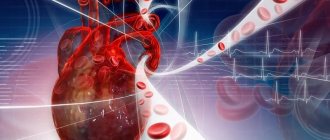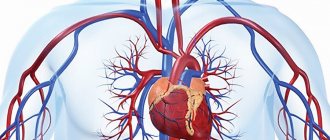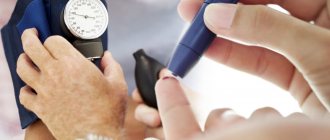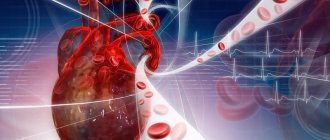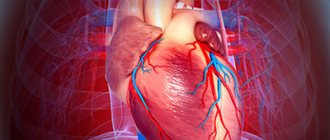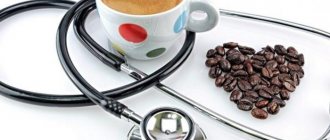The reality is that alcohol still causes a huge number of illnesses, deaths and accidents. First of all, this is due to a loyal attitude towards its use: if you say in a group of friends that you use drugs, you will receive a real portion of condemnation, although the same words about vodka will not surprise anyone.
This loyalty has developed in society due to misconceptions about alcohol. A safe dose, healthy wine and the treatment of viruses with vodka - these and other myths are long overdue for consignment to the dustbin of history.
Safe dose of alcohol
A safe and healthy dose of alcohol is 0 mg. Last year, alcohol was recognized worldwide as a neurotoxic poison, regardless of quantity.
Any amount of alcohol has a toxic effect on the brain, destroys the liver and increases the load on the cardiovascular system.
There are doses that our body can handle without consequences. Of course, if we are completely healthy.
It is approximately:
- 200–250 ml of red/white dry wine per week for women.
- 1 bottle of fortified wine 18% alcohol or 3 glasses of vodka 50 ml per week for men.
Of course, it is difficult to completely give up alcohol in the existing culture. But it seems so only at first glance. It’s worth trying to play sports, pick up interesting hobbies, improve relationships in your family and at work - you don’t want to drink alcohol when everything is good in life. Start small: don’t drink alcohol this coming weekend, then reduce the number of alcohol days to 1 per month, and gradually you will learn to have fun without alcohol.
About the danger of heart attack and the effectiveness of coronary stenting
What do we know about heart attack? Almost everyone has heard that this is a serious, deadly condition. In the relatively recent past, saving the life of a person with a massive heart attack was considered a truly remarkable result of treatment, and with the most favorable course of the disease it meant long months of strict regime, slow recovery, and loss of ability to work. Today, medicine poses different tasks: not just to save, but to return a person to normal life, and the provision of specialized medical care plays an important role here. At the same time, maintaining heart health depends on ourselves.
KONSTANTIN ALEKSENDROVICH KIREEV, head of the Center for X-ray endovascular diagnostics and treatment about the danger of heart attack and the effectiveness of coronary stenting:
— First of all, it is necessary to understand what acute myocardial infarction is. This is necrosis, that is, the death of a section of the heart muscle, developing as a result of a sudden, acute disturbance of blood flow in the coronary (related to the heart) artery system. Blockage of a branch of the coronary artery can be caused by its thrombosis, less often by embolism or long-term (more than half an hour) persistent spasm.
The most common cause of a heart attack is atherosclerosis, when atherosclerotic plaques form on the walls of blood vessels: they narrow the lumen of the coronary arteries and can also contribute to the destruction of their walls, which provokes the formation of blood clots and blockage.
An acute heart attack causes irreversible changes in the heart muscle: the death of part of the functional muscle cells of the heart (necrosis) and their subsequent replacement with connective tissue, that is, the formation of a post-infarction scar. The scar on the myocardium remains for life. It cannot resolve, and the heart always remembers the heart attack. Subsequently, a violation of the blood supply to the myocardium can lead to a disorder of cardiac activity: heart failure develops, that is, the heart does not perform its functions in full, accordingly, for the full existence of the whole organism there is simply not enough “power”.
In simple terms, due to an acute circulatory disorder, the heart gradually begins to “die”, and in order to save a person’s life, it is necessary to restore blood circulation as soon as possible. If medical care is not provided in a timely manner, a person with a heart attack may die within the first 24 hours. In general, the prognosis of the outcome of a heart attack depends on the size of the myocardial lesion, the severity of the course, the age of the patient, and the development of complications. But in any case, the prognosis of the disease is influenced by the timeliness of the start of treatment and its adequacy.
More than 5,000 myocardial infarctions are registered annually in the Chelyabinsk region, and this disease still remains one of the main causes of premature death. For a long time, the treatment of acute infarction in our area was far from the most advanced strategy. According to indications, thrombolytic therapy was carried out, that is, the administration of drugs that resolve the blood clot and restore the patency of the vessel. Such assistance was provided both by emergency medical teams before hospitalization and in intensive care units of hospitals. The success of treatment often depended on the correct choice of drug and the timely start of its use. Of course, there was no talk of the high effectiveness of drug therapy: a very high percentage of deaths (about 16−20%), and if a person remained alive, he became disabled, his heart could not work properly.
The situation changed fundamentally in 2011, when, as part of the healthcare modernization program in Chelyabinsk, they began to perform emergency operations for acute myocardial infarction - percutaneous coronary interventions, including stenting of the coronary arteries. This was an undeniable breakthrough for Chelyabinsk healthcare.
Coronary stenting is the most effective way to treat acute myocardial infarction due to the complete elimination of circulatory disorders through direct and immediate impact on the infarction. The essence of the method is to install a special stent into the affected vessel through the radial artery (on the wrist) in order to restore blood flow. A stent is a metal mesh structure that resembles a hollow tube of small diameter. Using a special balloon, a folded stent is inserted into the artery, under the control of an X-ray machine, it is delivered to the site of narrowing of the vessel, then, when the balloon is inflated under pressure, it is expanded and implanted, expanding and supporting the affected vessel in the area of blockage or critical narrowing and restoring blood flow. Also, in order to make the intervention most effective and safe, a wide range of special drugs are used.
The advantages of stenting also lie in the fact that this operation is low-traumatic, practically painless, has a small number of complications, reduces the length of hospital stay from 15-17 to 7-11 days, makes it possible for the patient to become active early and refer him for rehabilitation to a sanatorium. resort conditions. Thanks to stenting in acute myocardial infarction, mortality has decreased by almost half, and today it is about 6%. But the most important thing is that after a heart attack the patient can return to a normal, fulfilling life, to his work.
COMMENT BY EVGENY MIKHAILOV, chief freelance cardiologist of the South Ural Health Directorate, candidate of medical sciences:
— During a heart attack, approximately half the thickness of the heart muscle dies in the first three hours, and in the next three hours the entire thickness of the muscle dies. Therefore, stenting in the acute period of myocardial infarction is effective if it is performed as early as possible, no later than the first 6 hours from the onset of the infarction, optimally - up to 2-3 hours. Restoring blood flow in a clogged artery in this time period, before the development of irreversible changes in the myocardium, sharply reduces the area of the infarction, and sometimes makes it possible to “interrupt” its development. When we intervene after these 6 hours, we can only reduce the area of necrosis, but not save from myocardial infarction. Because patients arrive too late, half of them do not survive.
Here, a lot depends on how quickly the patient or his relatives call an ambulance. People should know the clinical manifestations of myocardial infarction. If you suddenly experience severe, usually frightening, pain in the chest that cannot be relieved by taking nitroglycerin, you should not hesitate, call an ambulance immediately. Thus, first aid will be provided on the spot: the team carries out intensive therapy to relieve pain and dissolve the blood clot, and will deliver you to the hospital as quickly as possible. But I repeat once again, the most important thing is to call an ambulance on time!
About the work of the X-ray surgical service
Four days a week we receive patients from 4 districts of Chelyabinsk and 7 municipalities of the Chelyabinsk region, a population of 700 thousand people. Today, percutaneous coronary interventions are one of the priority areas of work for the Road Clinical Hospital. It should be noted that we provide emergency assistance to everyone without exception, and not just assigned citizens. Among the hospitals of the Russian Railways-Medicine health care network from Kaliningrad to Khabarovsk, we have the largest volume of emergency coronary stenting operations.
We are interested in ensuring that a patient who came to us sick leaves us relatively healthy, relatively quickly, so that he can return to work with minimal loss of quality of life. Every effort is being made to achieve this. All actions of medical personnel are very clearly organized to quickly determine treatment tactics - from the emergency department to the patient’s admission to the cath lab or intensive care unit. We not only strive to provide this assistance as quickly as possible, but we also have every opportunity to do so.
Effective results are also facilitated by the fact that practical work is always carried out in close connection with science. On the basis of the road hospital there are two main departments of the South Ural State Medical University, which means the introduction of modern technologies into the treatment process, continuous training of specialists, provision of advisory assistance, joint analysis of the treatment and clinical cases.
We should always evaluate our work in accordance with global standards so that we can understand whether we are doing good or bad work. Thus, it is considered that a medical organization is working well when 70% of patients with heart attacks undergo coronary stenting. In 2021, this figure was 76%. In my opinion, today everything that is necessary is being done to save lives and preserve people’s health.
How not to “live to have a heart attack”
There are major risk factors that can lead to the development of myocardial infarction. We can influence some of them, but not others. You cannot influence, for example, gender (men are more susceptible to coronary heart disease), age, family history, or hereditary predisposition. However, we can significantly reduce the adverse effects of factors such as arterial hypertension, smoking, diabetes, high cholesterol, excess weight, and a sedentary lifestyle. All these factors, both in combination and each independently, provoke the development of atherosclerosis, which, as I have already said, is the main cause of myocardial infarction.
We conducted a study of medical and social status, quality of life, and the presence of risk factors for atherosclerosis in a group of patients diagnosed with myocardial infarction. 200 people took part in the survey, all residents of Chelyabinsk, under the age of 65 (this age group is at risk of premature death, a generation that in 10 years will give the expected average life expectancy in the country).
The results of the study revealed that the lifestyle of our patients leaves much to be desired. Every second patient smokes, 90% have a smoking history of more than 20 years, 2/3 of patients smoke a pack of cigarettes or more per day. Arterial hypertension was detected in 70% of patients, while only 20% of them take antihypertensive drugs; diabetes mellitus - in 40%, high cholesterol - in 42%, obesity - in 55%, that is, in every second person studied.
Moreover, every third out of 200 patients suffers from a second heart attack, because people neglect secondary prevention, in particular, drug therapy and giving up bad habits. Many patients, feeling almost healthy after stenting, want to forget about the disease as soon as possible. However, we must not forget about it. In order for the heart to work efficiently, for a year you need to take special medications to thin the blood, improve cardiac output, contribute to minimal changes in the myocardium after a heart attack, and statins to lower cholesterol levels. It is also necessary to give up smoking, alcohol, monitor your weight, adhere to a certain diet, etc. The result of non-compliance with these recommendations is always disastrous.
I note that the number of patients in whom a heart attack is not associated with atherosclerosis, but is most likely caused by a sharp spasm of the coronary artery against the background of severe stress or a large loss of fluid and, as a consequence, thickening of the blood and the formation of a blood clot, in the study group is very, very small .
Indeed, people think little about their health, they ignore alarming symptoms due to an irresponsible attitude towards themselves or out of ignorance, although there is enough necessary information in the media and on the Internet, there are very good social advertising videos. But citizens simply do not pay attention to this.
Today, medical capabilities make it possible to save the lives of patients even with severe heart attacks. But not only doctors, but also ordinary people should be wary in this regard. Without this, no technology will help. Atherosclerosis is a very vicious disease; it affects many vessels, not only those related to the heart, but also in the brain and limbs. Therefore, proper attention to your health is so important.
Give up bad habits and “fast food”, add more physical activity to your life, devote at least 30 minutes a day to physical exercise and walking in the fresh air. Also, do not skip medical examinations and consult a doctor on time.
Even if you undergo a medical examination once every three years, this will allow you to identify existing health problems and correct them before the bell rings.
Now there are very good and affordable medications that can not only improve the situation, but actually affect the prognosis for a person’s life. A heart attack can be prevented, and not at the cost of any incredible efforts or means. You just need to be a little more attentive to yourself. Share
Doctors' opinions on alcohol
If previously the belief about the benefits of a glass of wine and a glass of vodka was popular among doctors, now everyone is actively disowning these beliefs. Recent scientific studies have proven 100% negative effects of alcohol on the body. Today, the safest and healthiest solution is to give up alcoholic beverages or reduce them in your diet to a minimum.
There is not a single medical recommendation on alcohol consumption in the world. No disease can be cured or prevented by this dangerous substance. The heart and blood vessels should be treated with medications and physical activity, and flu and coronavirus should be prevented by vaccination.
Alcoholism is a serious disease that destroys a person both physically and socially. It always starts with “safe” doses—a glass of wine on Friday night, a can of beer after work—and ends with dire consequences. Control yourself and try to limit your drinking to holidays and special events.
Take care of your health!
Types of stents
Usually a silicone stent is installed in the ureter, but there are also stents made of polyurethane, metal, reinforced with titanium and nickel, coated with hydrogel.
Curved ends provide better stent fixation, which is why double-loop, or JJ, stents are used in most cases. But single-loop ones can also be used - in which only one end is bent.
The length of stents can vary from 6 to 80 cm. The diameter also varies - from 1.3 to 4 mm.
For each patient, the optimal model and size of the stent are determined individually.
Course of ischemic heart disease during heavy drinking
With sudden ischemia, the pain is so severe that the person calls an ambulance. In the hospital he receives the necessary treatment and subsequent rehabilitation. But if the lesion is small, there may be no pronounced symptoms, and the area of necrosis is replaced by connective tissue that cannot perform the functions of the heart muscle.
A person who is heavily intoxicated does not always realize that there is a problem with his “engine”. Sometimes there is no pain, but shortness of breath begins due to lack of oxygen. An alcoholic, feeling a heaviness in the chest during a binge, chalks it up to manifestations of a hangover, and drowns himself out with a heavy dose of degrees. Alcohol increases the pathology, and without medical intervention the person dies. Unfortunately, such outcomes are not uncommon during long-term drinking bouts.
Causes
Usually provoked by atherosclerosis of the coronary arteries, as a result of a sharp spasm of blood vessels or their clogging with a blood clot. It is more often diagnosed in people registered for angina pectoris, hypertension and other CVDs. But often patients who abuse alcohol are admitted to cardiology. The risk of developing a heart attack is much higher for them, since alcohol:
- increases blood pressure;
- increases heart rate;
- provokes vascular spasm;
- flushes out potassium and magnesium from the body, which are necessary for cardiac tone;
- inhibits protein synthesis.
With increased physical activity and severe stress, the myocardium requires more oxygen and nutrients, and spasmodic vessels affected by atherosclerotic plaques are not able to provide them.
Usually, burning (dagger) pains appear suddenly at night or in the morning and are relieved only a few hours after taking narcotic drugs.
Sometimes the course of the pain syndrome is similar to angina pectoris (a feeling of compression like a hoop or a vice).
Important! If the burning sensation in the chest lasts longer than 15 minutes and nitroglycerin does not help, your general health worsens - you need to call an ambulance as quickly as possible.
Alternative opinion
The European Cardiological Society, with the support of American scientists, after research, concluded that you can drink alcohol after a heart attack if the condition has stabilized.
They cite statistics for several years, which revealed shocking facts: if a man drank before illness, then complete abstinence after it increased the risk of repeated attacks by 32%, in contrast to those who drank a little red wine daily.
Particularly pleasant for alcoholics was the message that male mortality was highest among those who drank before a heart attack and quit completely after it. The fact was explained by the difficult to tolerate withdrawal syndrome in addicts.
It was determined how much alcohol should be drunk per day to ensure a healing and strengthening effect. Converted to pure ethanol:
- 28 g/day - for men;
- 14 g/day - for women.
In terms of habitual drinks, moderate alcoholic doses are defined as follows:
- 40 (20) ml of vodka for males and females, respectively;
- 200 (100) ml wine;
- 0.5 l (0.25) ml beer.
Such volumes are considered acceptable for healthy people, but clinical studies have shown the relative safety of this amount for people after myocardial ischemia. It is emphasized that taking a small dose of ethanol daily for a week cannot be equated in terms of benefit and safety to simultaneous intake of the entire weekly volume at once.
The effect of alcohol on the heart
Alcohol affects the liver, leading to cirrhosis, but more often the alcoholic does not have time to live to see it, as he dies due to damage to the cardiovascular system.
There are many myths that a glass of red wine or cognac cleanses blood vessels and dilates them, and has a beneficial effect on a person. But a healthy engine and alcohol are incompatible.
When ethanol is metabolized by the liver, toxins are formed that damage myocardial cells. The heart muscle cannot contract as expected, compensation processes are launched.
Alcohol disrupts lipid metabolism, LDL - low-density lipoproteins accumulate, and the amount of HDL - high-density lipoproteins decreases. Atherosclerotic plaques form in the coronary arteries. Their lumen narrows, the heart experiences constant unexpressed hypoxia.
Using high-calorie, fatty, smoked and sweet (for wine and liqueurs) foods as snacks unjustifiably increases the calorie content of the diet. Excess calories turn into fat deposits, obesity develops - in addition to the deposits of fatty tissue, the connective cells of the myocardium and liver grow, and the deposition of cholesterol on the vascular walls accelerates. Diabetes mellitus often develops.
Expert opinion . Although alcohol dilates the bloodstream for a short time, it is followed by a reflex spasm. At some point it can become critical and lead to an acute ischemic attack.

